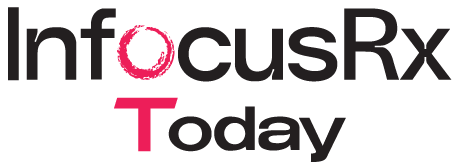Chronic Total Occlusion (CTO) remains a significant challenge in cardiology, primarily due to its complexity and impact on patients’ symptoms and quality of life (QoL). Percutaneous coronary intervention (PCI) has emerged as a key treatment strategy for CTO, particularly when compared to pharmacological therapy. PCI for CTO is generally preferred over drug therapy for alleviating symptoms like angina and improving QoL.
The therapeutic options for patients with CTOs have expanded immensely thanks to sophisticated pre-interventional planning, including advanced cardiac imaging, advanced percutaneous coronary intervention (PCI) equipment, cardiac surgery, and effective anti-ischemic optimal medical therapy (OMT). Because of these developments, the success rate of CTO PCI today exceeds 80-90% in the hands of expert operators working at specialized CTO referral centers.
According to the CTO Academic Research Consortium (CTO-ARC), a CTO is defined as an occlusion of an epicardial coronary artery without antegrade flow through the lesion and with a probable or definite duration of ≥3 months, based on angiographic criteria such as a Thrombolysis in Myocardial Infarction (TIMI) grade 0 flow through the lesion with no evidence of a thrombus, no staining at the proximal cap, and the presence of mature collaterals.
Ad hoc CTO PCI (i.e., during the same diagnostic angiogram) is discouraged. CTO PCI should be started only after having ensured that sufficient time is available, experienced operators are present and a well-defined strategy has been developed. The treating physicians will have the opportunity to review indications, perform additional tests if needed, and inform the patient and his family, leaving enough time for decision-making.
CTO PCI and Left Ventricular Dysfunction
The effect of CTO PCI on LV systolic function has been extensively studied. The EXPLORE trial found no significant benefit of PCI over drug therapy for LV function improvement in STEMI patients with CTO at 4-month follow-up, possibly due to slow enrolment and low PCI success. The REVASC trial also showed no significant difference in SWT changes after one year, though non-CTO lesion revascularization might have influenced results. However, subgroup analysis suggested that patients with less complex CAD and lower baseline LVEF saw more benefit from revascularization. A meta-analysis by Megaly et al. indicated that successful CTO PCI significantly improves LVEF, particularly in patients with initially lower values.
PCI CTO- Arrhythmic Events and Sudden Cardiac Death
CTO in an infarct-related artery is linked to an increased risk of ventricular arrhythmias and sudden cardiac death. The scar tissue formed after a myocardial infarction can create an arrhythmic substrate, which is exacerbated by hypoperfusion in the surrounding myocardial area. Revascularization of the CTO may restore blood flow, leading to positive electrical remodelling and reducing the likelihood of ventricular tachycardia. A recent meta-analysis confirmed that patients with CTO face a higher risk of ventricular arrhythmias and overall mortality. This highlights the importance of considering defibrillator implantation in patients with infarct-related CTO to mitigate these risks.
PCI CTO- Mortality and Major Adverse Cardiac Events
The impact of CTO revascularization on mortality and major adverse cardiac events (MACE) remains contentious, with discrepancies between observational studies and randomized clinical trials.
The DECISION CTO trial found no significant advantage of PCI over medical therapy for reducing mortality and MACE, partly due to the exclusion of patients with very low LVEF. In contrast, registries and a meta-analysis by Christakopoulos et al. indicated that successful CTO PCI is linked to better survival and fewer adverse events. Another meta-analysis suggested CTO revascularization may reduce all-cause mortality, cardiac death, and MACE compared to medical therapy. The REVASC study also showed a lower MACE risk with CTO PCI at 12 months, supporting the potential benefits of revascularization.
The revascularization of CTO through PCI offers several advantages over medical therapy, particularly in terms of symptom relief, QoL improvement, and potential benefits in LV function and arrhythmia reduction. However, the impact on mortality and MACE remains debated, with further research needed to clarify these outcomes. Nonetheless, current evidence supports the use of PCI in appropriately selected CTO patients, particularly those with severe ischemia and lower baseline LV function.





